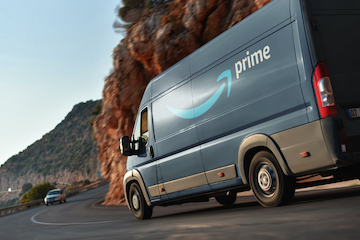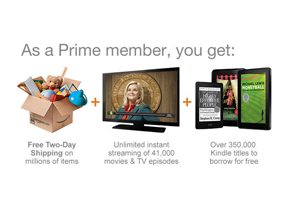One Amazon obsession is faster package delivery. When CEO Jeff Bezos shared his idea of delivery by drone with 60 Minutes, many ridiculed him. Now Amazon has a new idea that is an extension of existing technology and logistics and can be implemented much more quickly.
Patent Approval
In 2012 Amazon filed a patent application for what the patent abstract described as, “… packaging one or more items as a package for eventual shipment to a delivery address, selecting a destination geographical area to which to ship the package, shipping the package to the destination geographical area without completely specifying the delivery address at time of shipment, and while the package is in transit, completely specifying the delivery address for the package.” In December 2013 the patent was approved.
The goal is to increase the number of items that can be delivered the next day, or possibly the same day as the order.
Labeled anticipatory shipping, the method relies upon Big Data and predictive analytics to divine what customers want, even before they know they want it. Items would be shipped to a local hub where Amazon thinks particular items will sell well. The Wall Street Journal, which first reported the patent application approval, says Amazon will use predictive analytics to figure out what a person might want. A customer’s previous orders, product searches, wish lists, and the amount of time a person spends on a web page, would all be used to predict what a customer might want. Even lingering over an item with a mouse cursor could trigger Amazon to send an item.
Logistics
Pre-shipping to hubs or warehouses is not new. Ecommerce merchants have been using demand forecasting based on historical data for many years. Many store items at the sorting centers of their shipping partners such as UPS and FedEx. In contrast, Amazon is using current data and algorithms to try to predict what a customer might want.
Furthermore, Amazon could be taking pre-shipping to a new level. Amazon does not preclude actually putting an item on a truck and delivering it to a physical address. While this would certainly lead to unwanted deliveries and returns, Amazon believes that many people will simply keep the item and pay for it. Yet Amazon does not address how it would be able to require customer payment for an item that was never ordered.
If a customer would refuse to pay, Amazon states that, “Delivering the package to the given customer as a promotional gift may be used to build goodwill.” If the products are sitting around for too long, Amazon may also offer discounts to customers in the local area of the warehouse.
It’s quite possible that anticipatory shipping to customers’ home could create ill will if people find this process offensive. The cost of returns and promotional gifts could increase Amazon’s costs substantially. The company might choose to limit anticipatory shipping to its Prime customers who pay an annual fee for free shipping. The company could use this as an added benefit for Prime subscribers, especially if Amazon raises Prime annual subscription fees as it stated it might.
Why Is Amazon Doing This?
If this gets good customer response, Amazon will achieve a competitive advantage in shipping time. Few other online merchants have the resources to match Amazon’s logistics capabilities. It has invested hundreds of millions of dollars in new warehouses and supply chain improvements and wants to maximize its investment.
Amazon’s objective is to more effectively compete with brick and mortar retailers that can better satisfy customer needs for instant gratification. For instance, Target lets customers order products online and pick them up at local stores the same day. Target sends the customer an e-mail message when the item is ready for pick up at the store guest service counter. Just recently, Target started experimenting with shipping online orders from local stores.
Amazon will likely test anticipatory shipping in a few regional markets for customer response before rolling it out nationwide. That’s what the company is doing with its Amazon Fresh grocery delivery service.
Although the patent is for a straightforward shipping innovation, anticipatory shipping is really a test of how much influence a merchant can wield over customers.






